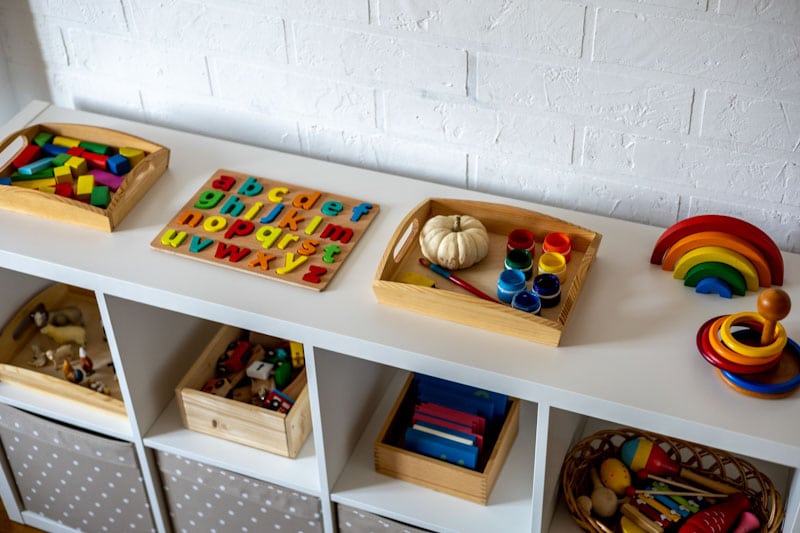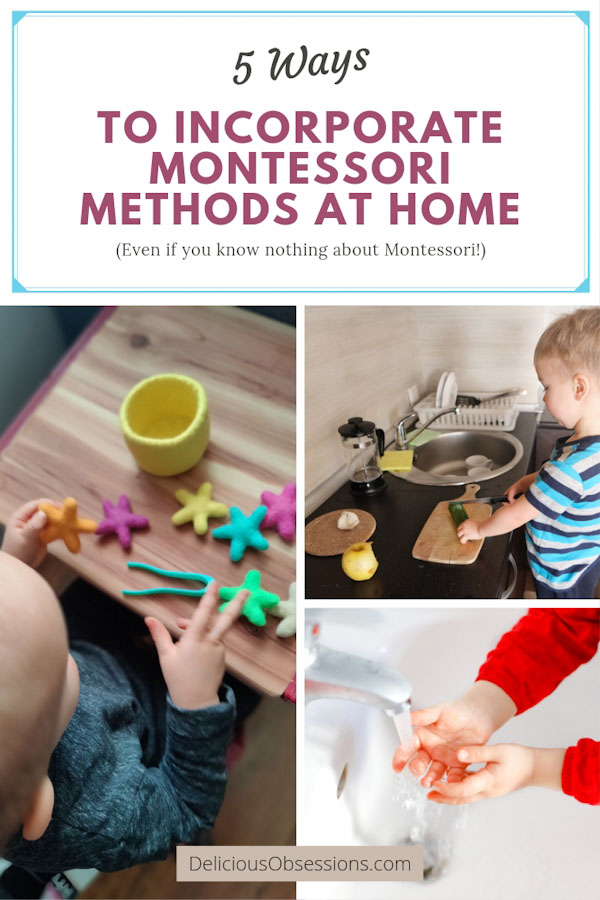FTC Disclosure: Delicious Obsessions may receive comissions from purchases made through links in this article. As an Amazon Associate I earn from qualifying purchases.Read our full terms and conditions here.
Whether you are homeschooling, traditional schooling, or any variety of alternative schooling, you may be curious about Montessori learning methods. In this post, I will share 5 ways to incorporate Montessori learning methods at home, even if you know nothing about Montessori.
Have you been curious about Montessori learning methods? Do you think your child may benefit from something different than the norm? Or perhaps you are just looking for some easy ways to broaden your child’s horizons? If so, keep reading.
I have known, since long before we had a child, that I wanted to homeschool. And that I wanted to incorporate some Montessori methods. I love some of the principles of Montessori and feel that they could benefit ALL children, regardless of the schooling methods you choose for your family.
In addition to Montessori principles, I’m also a big fan of the Waldorf approach. Like Montessori, I think this alternative learning style can benefit every child. Both methods put the child first and aim to cultivate the child’s skills through observation and fluid structure. Very unlike today’s traditional public schooling.
If Montessori and Waldorf aren’t your jam, there are many other styles out there to choose from. Most of which you have likely never heard of, so I’m going to share some of them here so you can drive deeper into your own research if you choose. Alternative education methods include:
- Harkness
- Reggio Emilia
- Sudbury
- Unschooling
- Worldschooling
- Outdoor Education
- Amara Berri
- Doman Pedagogy
- Popular Education / Paulo Freire
And, I’m sure there are many other methods that I haven’t listed too. When it comes to your child’s education, the sky is the limit! And there are so many amazing resources online to help you. And now, let’s look at 5 ways to incorporate Montessori learning methods at home, even if you know nothing about Montessori!
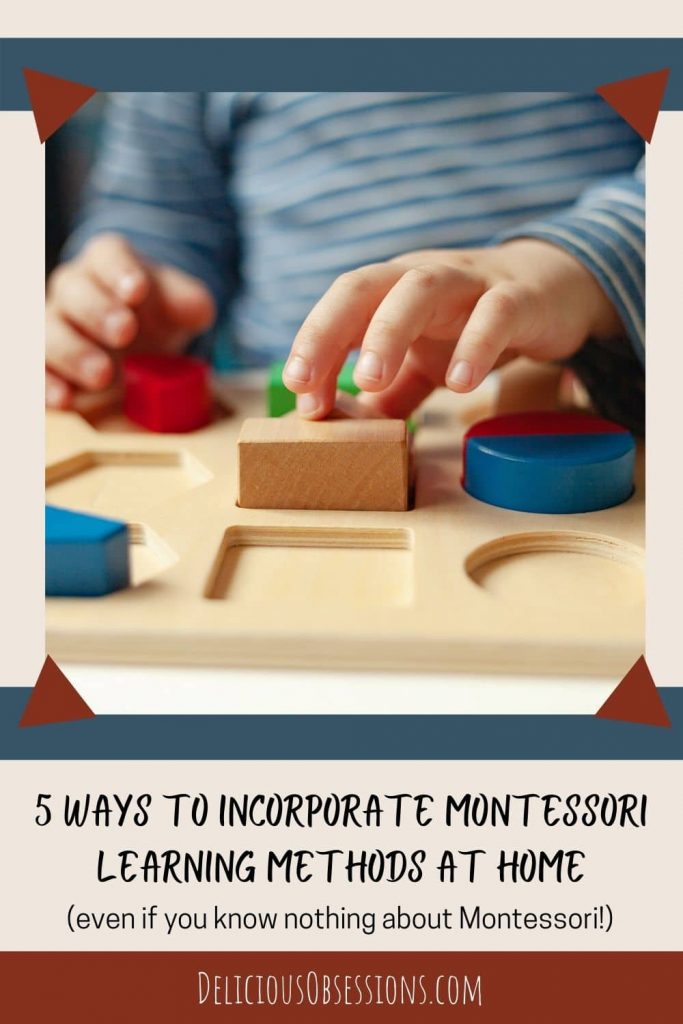
5 Ways to Incorporate Montessori Learning Methods at Home
The principles I am sharing today would benefit any home environment where there are children, so don’t feel like you have to be tied to a specific methodology to use these ideas. While I learned about these principles via Montessori websites and videos, they are things that any parent can do.
Simplify Your Home
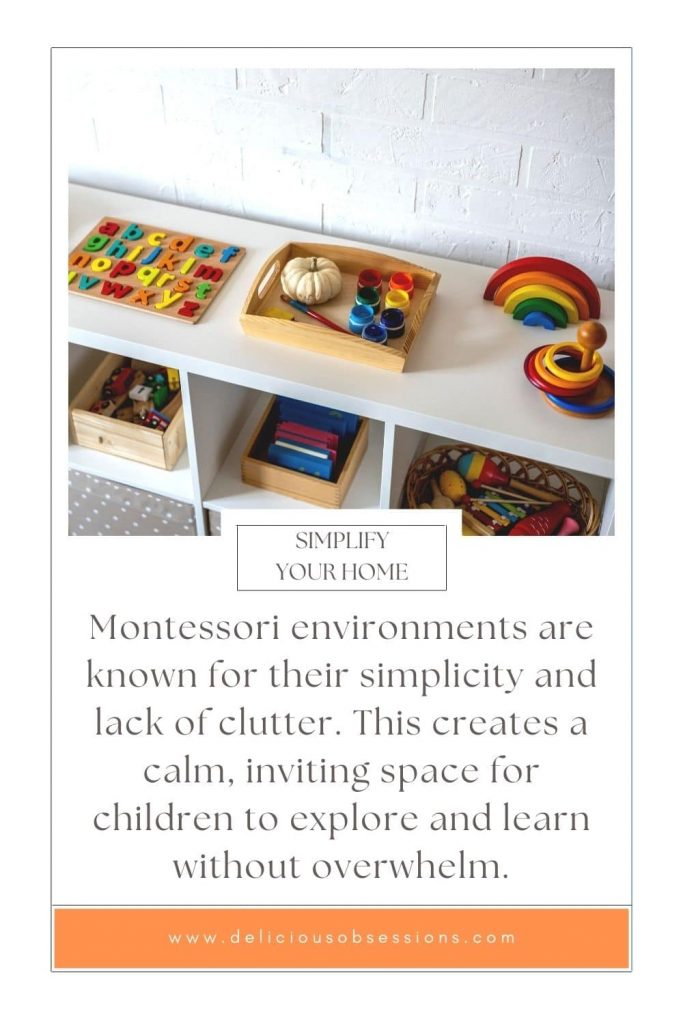
This has been the hardest thing for me to do. And frankly, I am so far from having a simple, clutter-free home. If you Google “Montessori home” you’ll see tons of gorgeous, simple, clean, perfectly organized spaces.
We don’t have that.
We have a very small house with no extra rooms or space to make a totally toddler-safe space. So we do the best we can with what we have for now. We’re also going to be moving soon and then we are going to have even less space than we do now.
But we are working on it and will continue to work on simplifying and decluttering. I am constantly going through Jacob’s toys to see what he truly needs and uses and what he doesn’t. I try to rotate toys out for him so that he stays engaged and curious. I also am always assessing our setup to see if there is anything we could do to improve it.
If you have the extra room in your house to create a fully functional play area for your kiddo, then, by all means, do it! But if you are like us and don’t, you’ll figure out a way to still make something work. The most important part is keeping the space as simple and clutter-free as possible so the child can focus on what is available rather than getting distracted by all sorts of odds and ends.
Learn to Be an Observer
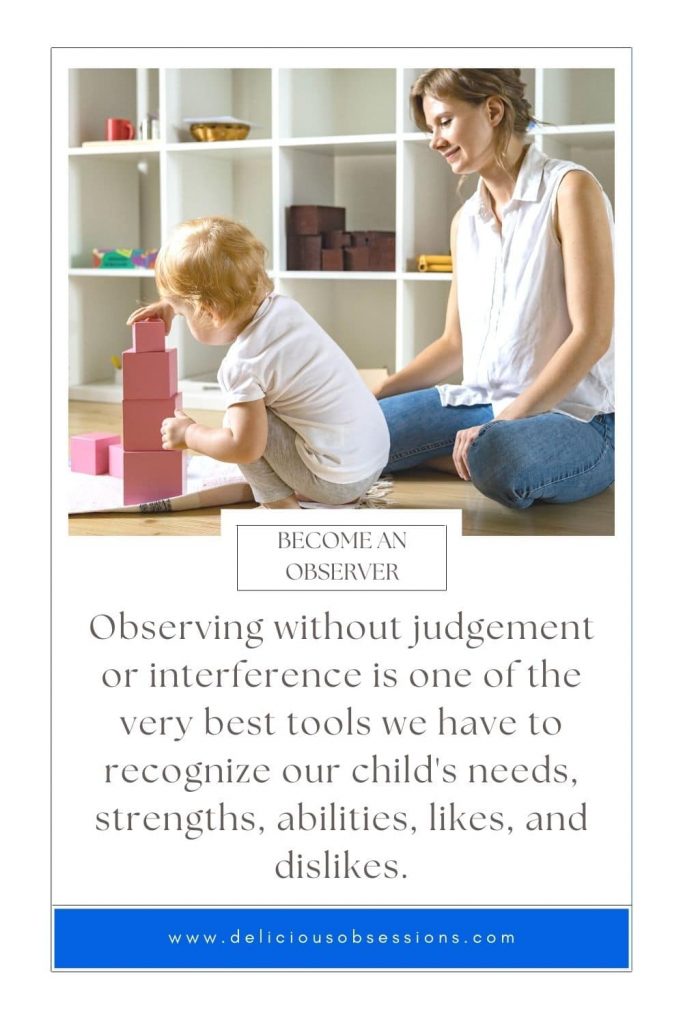
When it comes to Montessori principles, this is one of them that stands out to me. Becoming an observer might seem easy, but it might also seem hard. If you’re the type of person who always feels like they need to step in and help, then it may feel unnatural for you to step back and leave things alone.
Observing without judgment or interference is one of the very best tools we have to recognize our child’s needs, strengths, abilities, likes, and dislikes. When we observe and don’t interfere, the child’s natural flow of learning, creativity, and exploration can more easily take place.
When we interfere in ways that are not truly needed, it can break their concentration and even make them feel like they are not capable of doing whatever it is they are working on. No matter how well-intentioned our actions as parents may be, taking a moment to step back and ask, “Do I really need to step in right now?” is a beneficial practice.
By all means, if the child is in danger or is getting overly frustrated or upset, step in. But remember that a little frustration is normal and good. It’s a natural part of brain and skill development. I still catch myself wanting to help when Jacob gets frustrated with something. 9 times out of 10, if I resist that urge, he’s better off for it because he figures it out and feels that surge of confidence and assurance in his personal skills.
In addition, observing is such a great way to really understand our children on a deeper level. We are able to see how they interact with things or other children. We’ll easily begin to see where their skill levels are at. And we can then tailor their playing and learning times accordingly.
Practice Real Life Skills
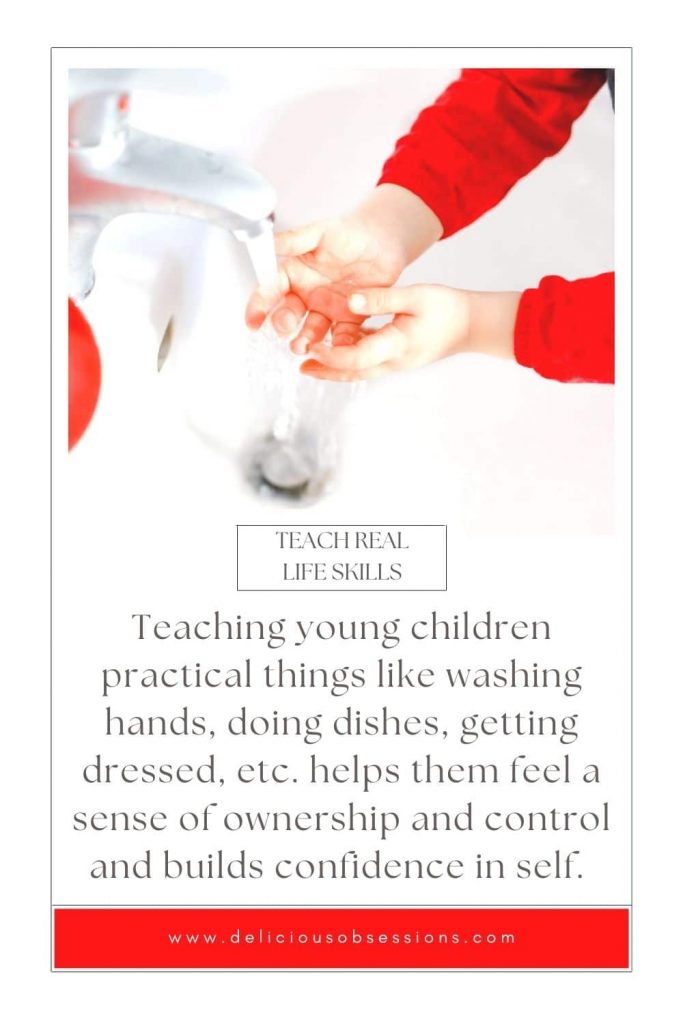
This might seem like a no-brainer, but you’d be surprised how hard it is to remember to let our children practice the simplest of real life skills on their own, rather than doing it for them. This is an area that I struggle with, despite how I always said I wouldn’t. Lol!
For example, washing hands. I often find myself washing his hands for him, rather than letting him move the soap around himself. Another example is getting him dressed. I forget to let him help dress himself and instead hurry through the process so we can get on with our day.
But I have to step back and remind myself that I am doing him a disservice by not allowing him to practice these things himself. Not only is it preventing him from learning how to do practical life things on his own, but it may also be setting him up with a fear or resistance to doing it himself because he may not feel like he is trusted or capable. Definitely not things I want him to cultivate in that smart little brain of his.
So whenever we are doing mundane, everyday things, don’t forget to include your babies and toddlers in whatever way is age-appropriate. Give them ample opportunities to feel included and learn skills that will serve them for their entire life.
Nurture the Child’s Inner Motivation
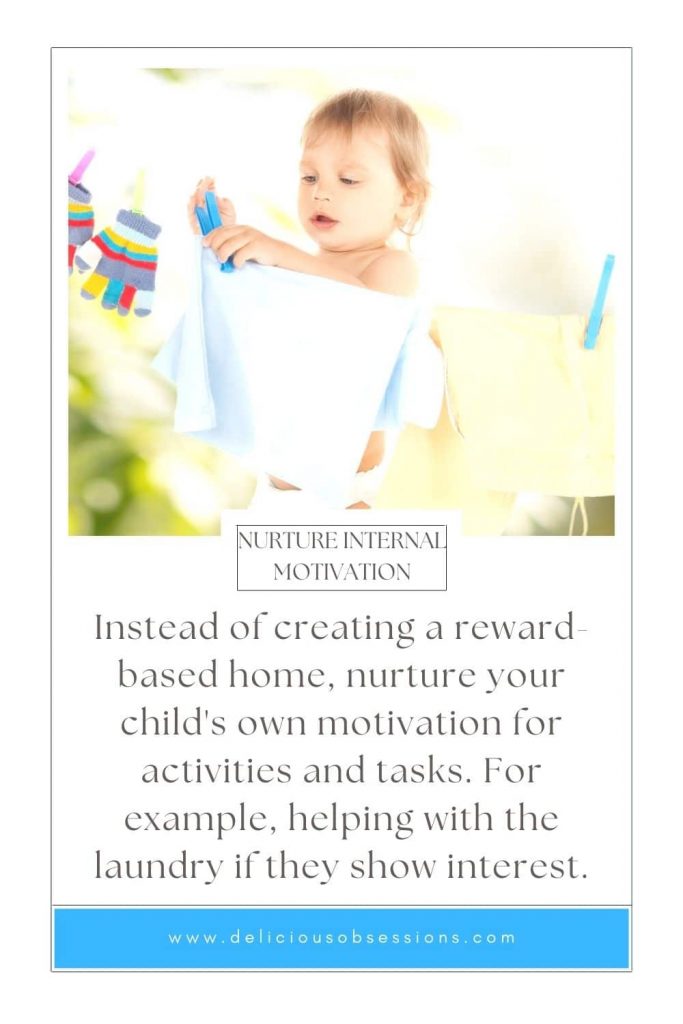
It’s really easy to fall into the “if you do this, you’ll get this in return” parenting trap when dealing with kids. Especially if they are headstrong and independent. But rewards-based home environments actually do a disservice to our children and prevent them from developing critical skills that they need for their adult lives.
A big principle in Montessori education is to focus on nurturing the child’s own inner motivation. Instead of creating a home where they get a reward for doing something, they learn that the reward is the satisfaction of being included and contributing to the environment in which they are living. They learn that the satisfaction of a job well done is reward enough.
This is also where becoming an observer is important. You want to pay attention to the things that your child is interested in and willing to help with or do without being asked or prompted. For example, Jacob LOVES to “help” with the dishes. Before he was walking, he was always fascinated when I would load and unload the dishwasher. When he was able to stand, he would try to help. And now that he’s 21 months (at the time of this post), he’s able to put silverware in the rack and help put some dishes in or take stuff out. He is the one who instigated this interest, I just have tried to encourage and cultivate it.
Raising children who are self-motivated because they WANT to help or take care of things is critical to their success later in life. They will not be tempted to chase quick fixes or think they deserve acclaim or rewards for every little thing. They will take genuine satisfaction in a job well done, regardless of whether anyone notices or not.
For more info on this, you might be interested in the book Punished by Rewards: The Trouble with Gold Stars, Incentive Plans, A’s, Praise, and Other Bribes.
Include Them in Food Preparation
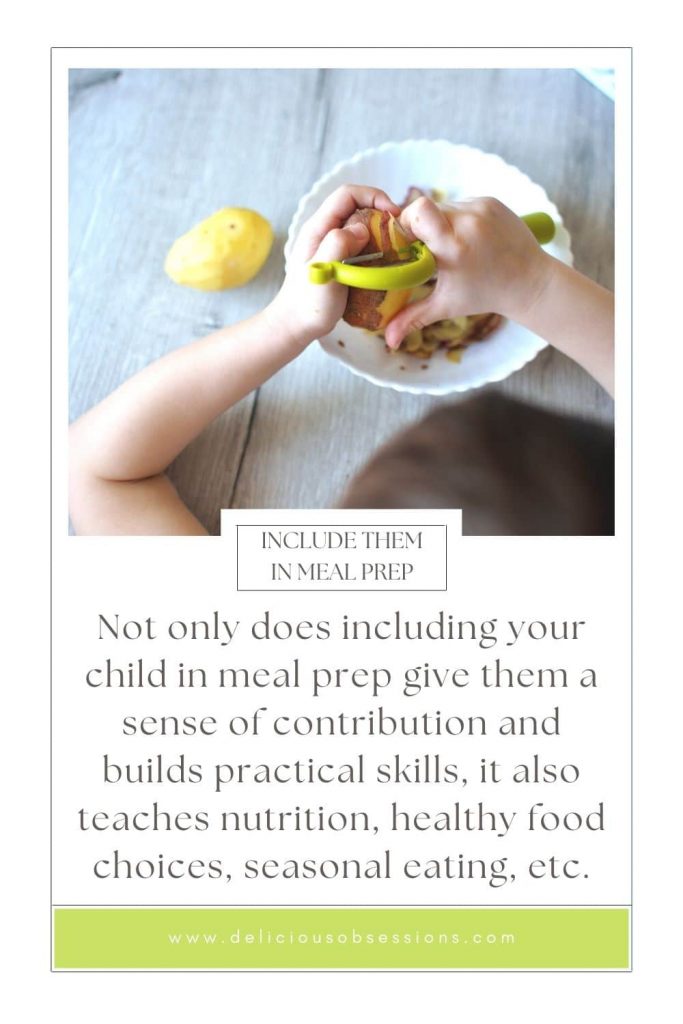
Would you believe that this is an area I struggle with? Me! The person who always said that she couldn’t wait to include her child in food prep as soon as they were big enough. I’ve said this long before having a child, fully inspired by the way my own mom raised me. She had me helping in the kitchen from the time I was old enough to stand on a chair and peer over the counter. I always said I’d do the same thing.
But then my babe was able to safely stand on his Learning Tower/Kitchen Helper… And I didn’t let him help… ☹️
Actually, it wasn’t that I didn’t let him, I just felt so rushed and busy all the time that I would either forget or not have time to supervise him while also making dinner. So he’d end up playing with toys while I hurriedly made our meals.
I decided this is not what I wanted so I have been making an effort to get him in the kitchen with me whenever I can. He’s still too young to be helping at the stove, but he can slice some soft foods (like bananas and avocados) safely with his little crinkle slicer. This wavy slicer was recommended in one of my Montessori groups and so far he has had good success with it.
We don’t do this every day, but every experience he has helping me is good for him and builds his confidence. As he gets older, more interested and capable, I can have him help with more and more kitchen tasks.
Not only is including children in meal prep important for skill development, but it gives them time to learn about where food comes from, what it looks like at different stages, what it tastes like, nutrition, healthy eating, and more.
Bonus Tip: Ditch the Flashy Toys
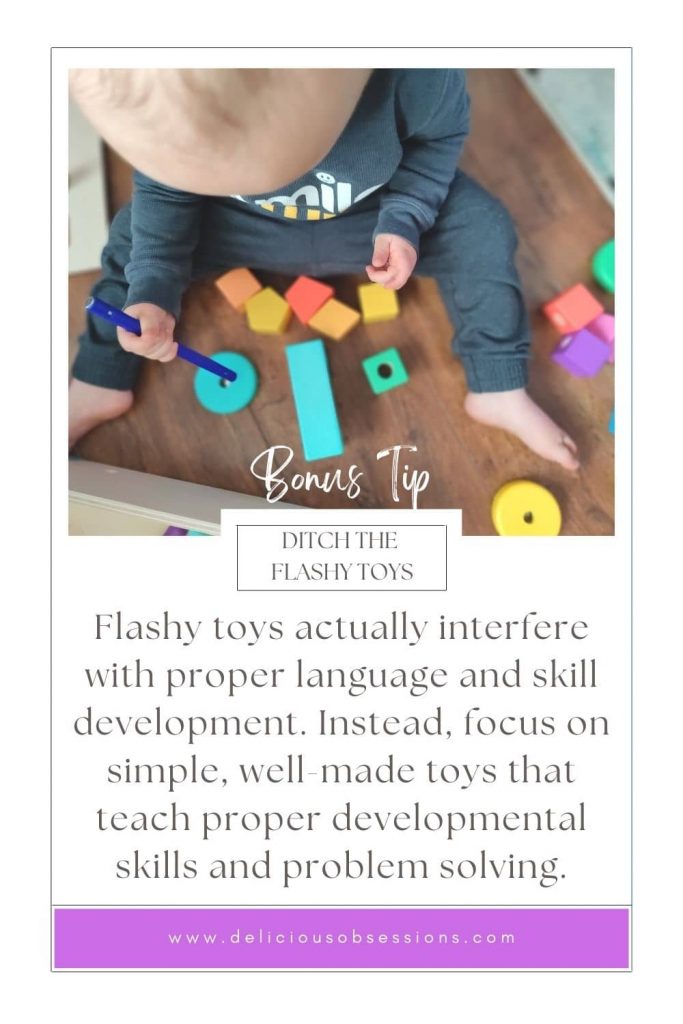
Yes, flashy toys can be fun, but many times they do not help in development. In fact, many child development researchers believe that electronic toys actually inhibit proper development (source). One thing I have done is get rid of a lot of his shiny, flashy toys. Especially the ones that make noise (except for his Baby Einstein classical music toy, which his grandma gave me at his baby shower. He really loves that toy).
Instead of plastic and noisy toys, we have tried to focus on practical, skills-based toys from companies that focus on appropriate age development like Lovevery (like these building blocks) and Melissa & Doug (this geometric stacker is one of our fave toys from M&D). Or, I have made my fair share of DIY toys too. Toys don’t need to break the bank, so if you’re on a tight budget, do a Google search for “DIY Montessori Toys” and you’ll be amazed at the results! Every day household items can be toys too. Jacob loves bowls, whisks, spoons, boxes, etc.
I have spoken about the value of high-quality toys, especially wooden toys before. You can read 5 Reasons Why Building Blocks Are Good for Toddler Development here. Montessori learning toys are always made with natural, sustainable materials like wood, organic fabrics and yarns, etc. Not only are they beautiful in and of themselves, but they are also high quality and easily passed down to other children or families. That’s why I love companies like Lovevery. Not only are their toys beautiful and sustainable, but they are age and developmentally focused so your kiddo is learning skills that are appropriate for their age.
So tell me, are you ready to incorporate some Montessori principles into your home? Which one(s) of these stood out to you the most? Leave me a comment below and let me know!

